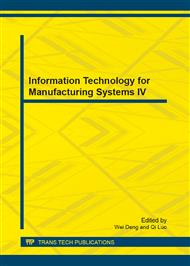p.29
p.34
p.40
p.46
p.50
p.56
p.62
p.66
p.72
Design of a Wheel-Propeller Integrated Amphibious Robot and Hydrodynamic Analysis
Abstract:
To satisfy a range of performance requirements for the robot in aquatic and terrestrial environment, we propose the use of groups of amphibious robots as near-shore observatories or other application that can be rapidly deployed, recovered and redeployed in response to changing environmental conditions. In this paper, we introduce a novel amphibious robot prototype with wheel-propeller integrated driving devices, which can realize both crawling locomotion on the ground and swimming locomotion in the water without changing its driving devices. This paper describes the design of the overall robot structure, and the six driving devices of the robot are driven by two independent motors, thus the amphibious robot can conveniently switch its locomotion modes according to the external environments. Finally, the hydrodynamic performances of the amphibious robot are analyzed by using ANSYS CFD hydrodynamic calculation software, and the analysis will present a foundation for the design of amphibious robot.
Info:
Periodical:
Pages:
50-55
Citation:
Online since:
September 2013
Authors:
Keywords:
Price:
Сopyright:
© 2013 Trans Tech Publications Ltd. All Rights Reserved
Share:
Citation:


